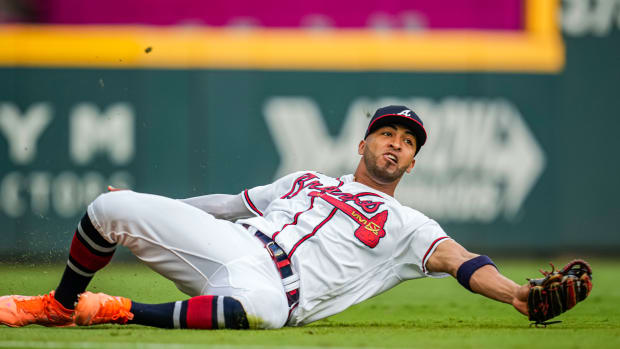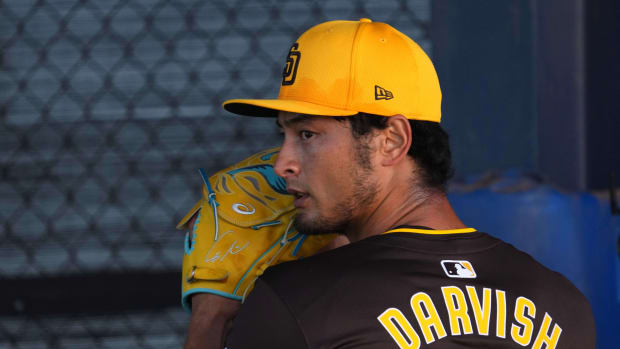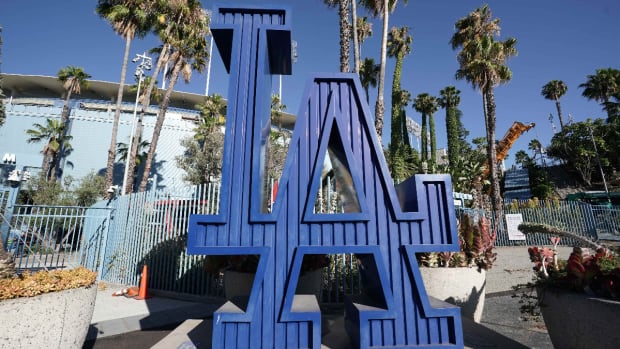Scouting Report: Max Scherzer
First in a series of weekly scouting reports provided to SI.com by the network of former players, coaches, scouts and executives at the Baseline Group.
Max Scherzer made his major league debut out of the Diamondbacks' bullpen on April 29 against the Houston Astros. He was very impressive, to say the least. He pitched 4 1/3 perfect innings and struck out seven. He showed the ability to work ahead in the count and the willingness to challenge hitters with his fastball. Scherzer did, however, over-throw some and leave a few pitches up in the zone, but because of the late life on his fastball, hitters weren't able to catch up to them.
Scherzer works from a three-quarters arm slot, and he gets a slight drop and drive action with his legs during his delivery. He creates deception for the batter with his shoulder turn.
The Diamondbacks have moved Scherzer to the starting rotation, replacing Edgar Gonzalez. He'll get his first start on Monday night against the Phillies. What will be key on Monday is how Scherzer handles himself with runners on base. He wasn't tested in this manner in his debut against the Astros, because he didn't allow a runner. But if he is able to repeat his mechanics from his debut, along with the resulting speed and late life, it's safe to say he won't have that many baserunners to deal with.
In his debut against the Astros, Scherzer showed three plus pitches:
1. Fastball. His fastball showed nice sinking action when down in the zone, and he has a good four-seam straight fastball to his glove side of home plate. The ball comes out of his hand very easily, and he consistently created late life on the ball through the zone.
2. Changeup. Scherzer used his changeup as his second pitch. He is able to create late sinking action on it by using plus arm speed.
3. Slider. He only used his slider a couple of times, and it showed quick, late break with average depth.
• Three above-average major league pitches: fastball, changeup and slider.
• Ability to work ahead of the hitter and throw strikes. He attacks the strike zone.
• He had composure -- at least in his first appearance. We'll need to watch how he deals with his first bad inning and his first bad outing to gauge the depth of his composure.
• Deceptive motion; he hides the ball well.
• Inexperience in major league games.
• Lack of organizational development. He has just 21 professional starts under his belt. Normal mistakes associated with development will therefore manifest themselves at the major league level. With his talent, this isn't a critical issue, but there are bound to be some adjustments he'll need to make.
He has a plus-plus fastball that has sinking action when thrown down in the zone. It also has a slight tail when it's elevated to his arm side of home plate. Scherzer also throws a four-seam, straight fastball to his glove side, and that pitch has plus life through the zone. He has the ability to throw strike one and work ahead of the hitters. He is able to successfully challenge hitters with his fastball. Against the Astros he did leave his fastball up in the zone a few times, but because of the late life on the pitch he was able to get away with it.
Scherzer only used his slider a couple of times, but it had average depth with a late break -- and he kept it down in the zone. After hitters saw his plus fastball, they weren't able to adjust to the slider. Once we see Scherzer a few times as a starter, we'll get a better feel for this pitch.
Scherzer used his changeup as his second pitch against the Astros, and he used it as an out pitch when he was ahead in the count. His changeup has plus sinking action to his arm side, and it broke late and was down in the zone. He did a good job of keeping this pitch down in the zone and getting hitters to chase it.
He has solid mechanics and is able to repeat his release point. He does have a slight drop and drive action, but he does a good job of using his lower half. Although his hands break late at times, he gets away with it because he has a quick arm swing. He hides the ball well from the hitter, and that makes him that much more effective. Once we see him pitch with runners on, we'll be able to provide more comments on his mechanics in the stretch.
In Scherzer's next several starts, this is what we'll be looking at:
1. How will he react to the pressures of pitching with runners on?
2. How are his mechanics from the stretch?
3. How will he deal with his first bad inning and his first bad outing?
4. What type of pitch count will the Diamondbacks have for Scherzer, and how will it affect his approach?
5. How will hitters adjust to the deception his delivery creates?
6. What adjustments will batters make to Scherzer after facing him several times, and what will Scherzer's adjustments be to the batters' inevitable adjustments? He has great talent -- but has he ever had to learn the process of making adjustments?




































